You’ve just flown 3 hours south after a long, dark and exceptionally rainy Scandinavian winter, in the hopes of finding some spring sunshine only to step off the plane into colder, greyer, and wetter weather than you left behind.
That’s the situation that I recently found myself in. My destination was Skopje in Macedonia, which shares a border with Greece. Somewhat short-sightedly this fact caused me to leave my winter coat behind, opting only for a light raincoat instead. I’d like to say that I am a seasoned enough traveller not to make these kind of mistakes, but I’m clearly not!
I didn’t know much about Skopje before I left, not even really knowing how to pronounce it; it is not a city that often features on the ‘Hot Destinations’ lists of travel magazines. From what I knew already it is a city currently undergoing extensive building projects and is known for ugly concrete buildings and eccentric statues.
It is often left out of travelling itineraries.
Maybe it is because Skopje does not have a hip night scene like Belgrade, it doesn’t have an infamously tragic history like Sarajevo or Mostar, and, as far as I know, there’s not a pretty little church in the middle of a lake like at Bled. It doesn’t have stunning coastline like Croatia, or Greece.
In short, Macedonia is often overshadowed by its neighbours.
Having loved Bosnia and Serbia, I didn’t hesitate when I saw cheap flights to Skopje. I just can’t get enough of meaty Balkan cuisine.
Even in the pouring rain, and it really did pour, there were plenty of interesting things to see and do.
Visit a Museum
Mother Teresa is probably Skopje’s most well known figure of recent times (historically the city also lays claim to Alexander the Great, but this is contested by Greece). She was born to Albanian parents in Skopje and left for India when she was 16. In the centre of the city is the Memorial House of Mother Teresa: a small museum commemorating her life and achievements. The museum stands on the spot of the church where she was baptised, and, once inside, is humble and unassuming—just as she was. It is free to enter, although donations are welcomed, and it is small enough to see completely within an hour.
Inside the museum are various letters, papers and photographs of Mother Teresa, and upstairs is a beautiful chapel that conducts daily services. It is a lovely place to reflect on one of the world’s greatest humanitarians.
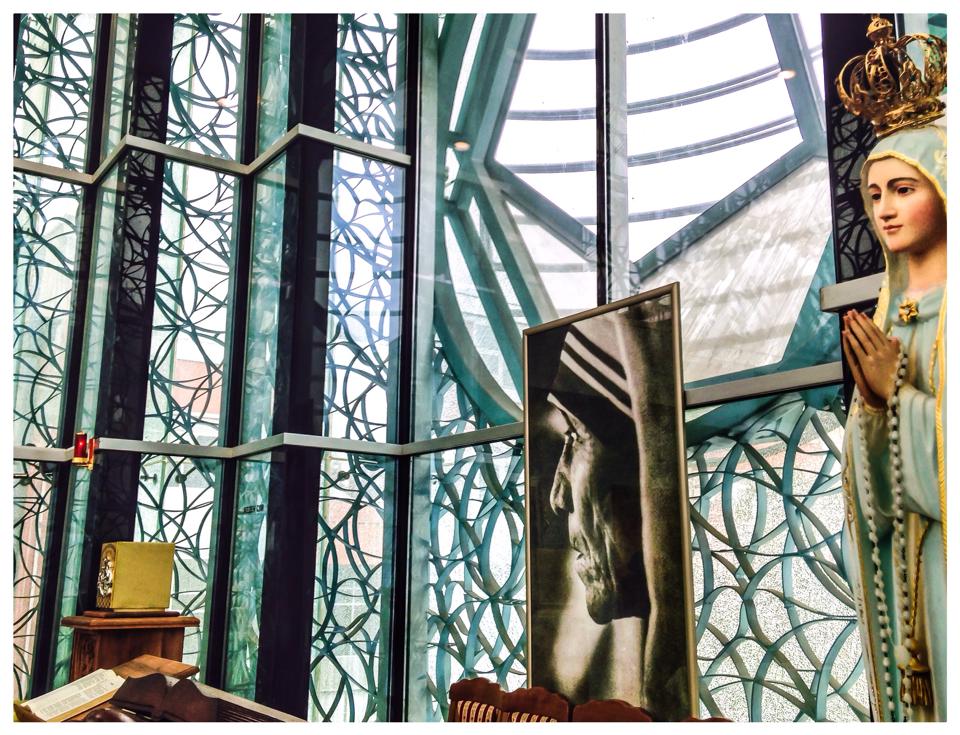
Another fascinating museum to visit is the Holocaust Memorial Centre for the Jews of Macedonia, which stands just at the foot of the Stone Bridge, on the Old Town side. This museum is located in a large building, the architecture of which forces you to reflect from the very moment you enter the modern mirrored sliding doors. There are three floors, which are easy to spend a few hours in.
Although there are not many artefacts to look at, the museum documents the tragic history of the Macedonian Jews who were transported to Treblinka death camp on 10 March 1943—exactly 68 years prior to the opening of the museum.
The first floor consists entirely of modern paintings documenting the plight of the Macedonian Jews. There is information in English and the museum is free to enter.
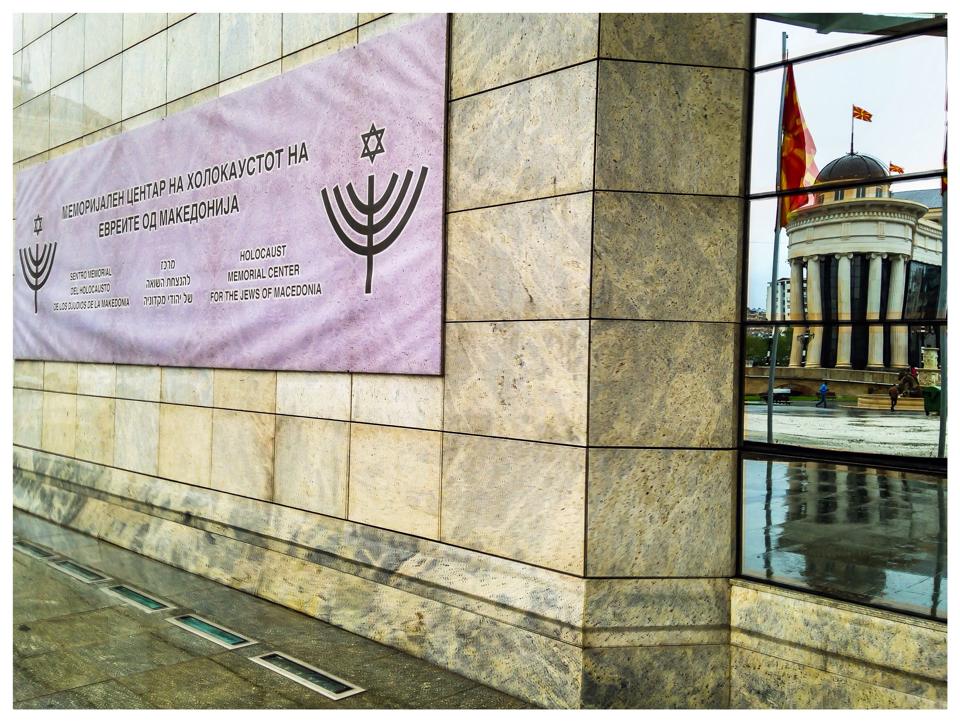
A museum that I walked past, but didn’t go inside, is the Museum of the City of Skopje, housed in the old railway station. The clock on the wall of the museum stopped at 5.17 am on 26 July 1963, the exact moment that a devastating earthquake rocked the city, killing 1000 people and destroying around 80% of the city. The crumbling building has not been repaired.
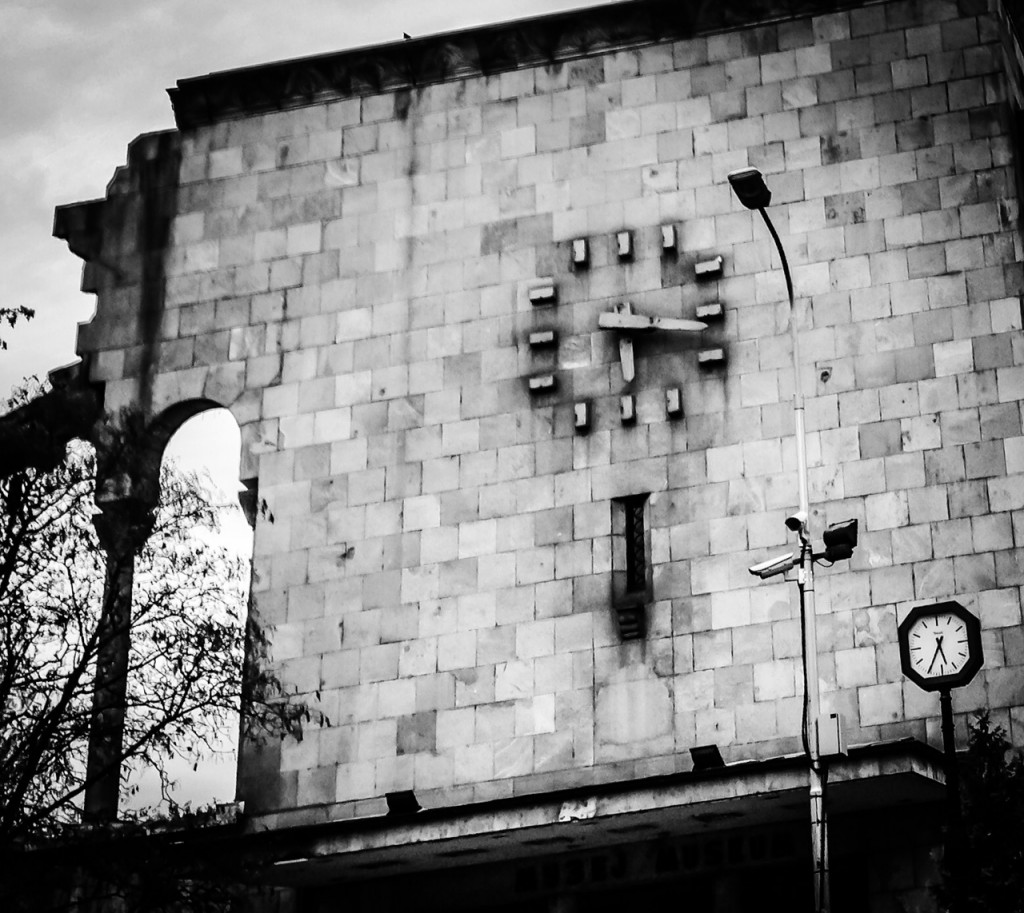
Eat Good Food
When it’s raining there is no better place to keep dry than in a café or restaurant, and Skopje has a few good ones to choose from. For a quick snack Pastel is a lovely French bakery with a selection of breads, pastries and chocolates to die for. Our waitress was really helpful, patiently explaining the menu in English for us and making recommendations for us. When we couldn’t decide which desserts to try, she suggested a few for us and cut them up so we could try some of each, and when we offered a tip at the end of our visit she refused to take it. The café is on Bul. Sv Kliment Ohridski (66-2).

For more traditional Balkan cuisine, we ate at the wonderful Old House restaurant, housed in what is allegedly Skopje’s oldest house. We were given menus in English (the first restaurant to do so during our stay), and had an extensive choice of delicious Balkan food to choose from. The waiter immediately brought us a starter of warm, fresh bread and creamy kajmak (my new favourite food). There are some great salads to choose from, I went with Shopska salad—a traditional Macedonian salad of tomatoes, cucumber, onion and cheese, and for my main course I had roast lamb.
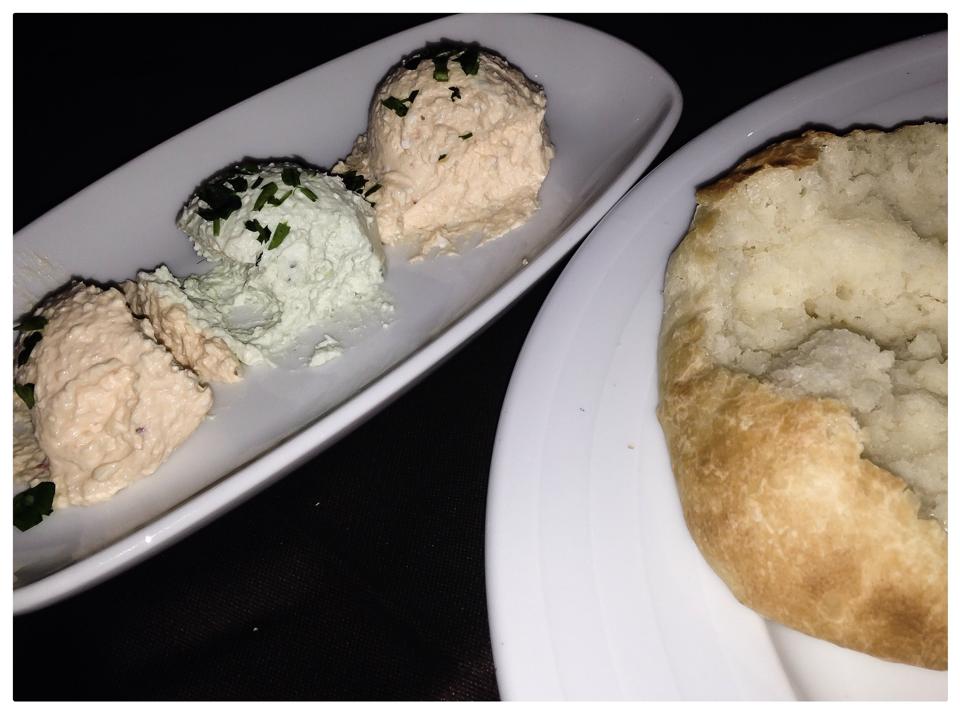
The restaurant is beautifully decorated, and has an outdoor area that would be perfect in the summer. Sadly, it was too cold and rainy for us to eat outdoors, but we were treated to a live band playing at the tables as we ate. The best surprise of all, was how cheap the bill was when it came. Old House restaurant is on Pajko Maalo 14.
For even cheaper Balkan food you could try out Kaj Marsalot, a socialist-themed restaurant with a large outdoor area for when the weather’s good, and a wood-burning stove inside for chilly days. The menu was extensive and the waiter patiently helped us to make our choices. You can find Kaj Marsalot on Sveti Kliment Ohridski bb, Skopje 1000.
And if you want to go even cheaper still, there are plenty of local eateries in the Old Bazaar area of the city. The food is good and cheap, but if you can’t read Cyrillic script then you’ll have to rely on guesswork.
Take Photographs
Even in the rain Skopje presents a few interesting photography opportunities, although without a wide-angle lens you might struggle to fit some of the city’s colossal statues into the frame: the large figure on the horse in the main square, unofficially believed to represent Alexander the Great, is a ridiculously oversized monument. At night, the main buildings and bridges are lit up, making for some pretty pictures.
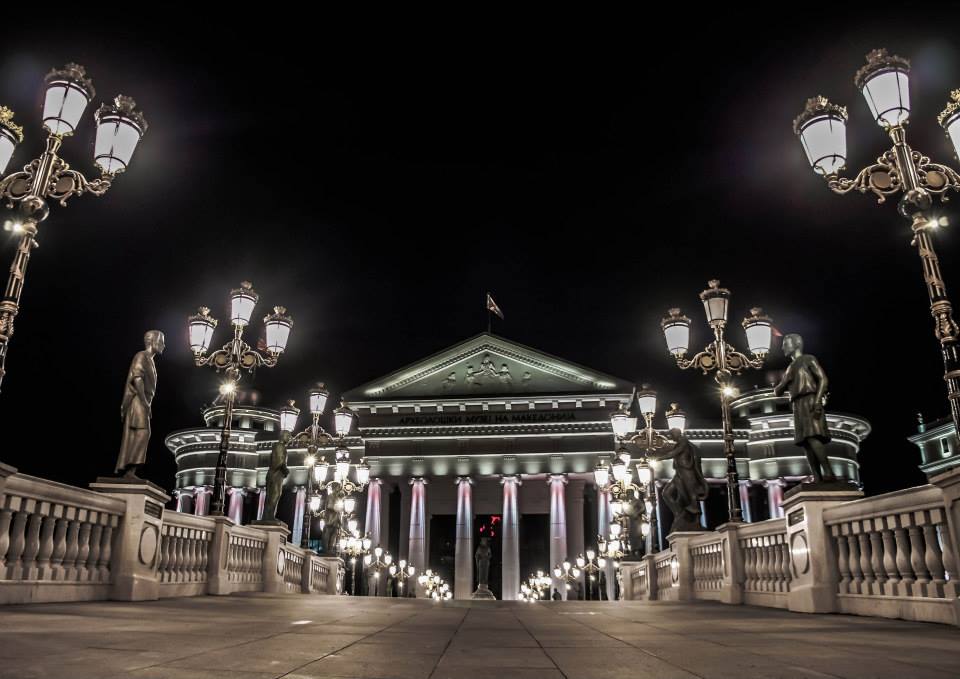
Even in the rain, Skopje is an interesting and fascinating city, but thankfully, the weather forecast promised us one day of better weather, so my next post will guide you through some of Skopje’s fairer weather activities.
Have you visited Skopje? Would you like to?

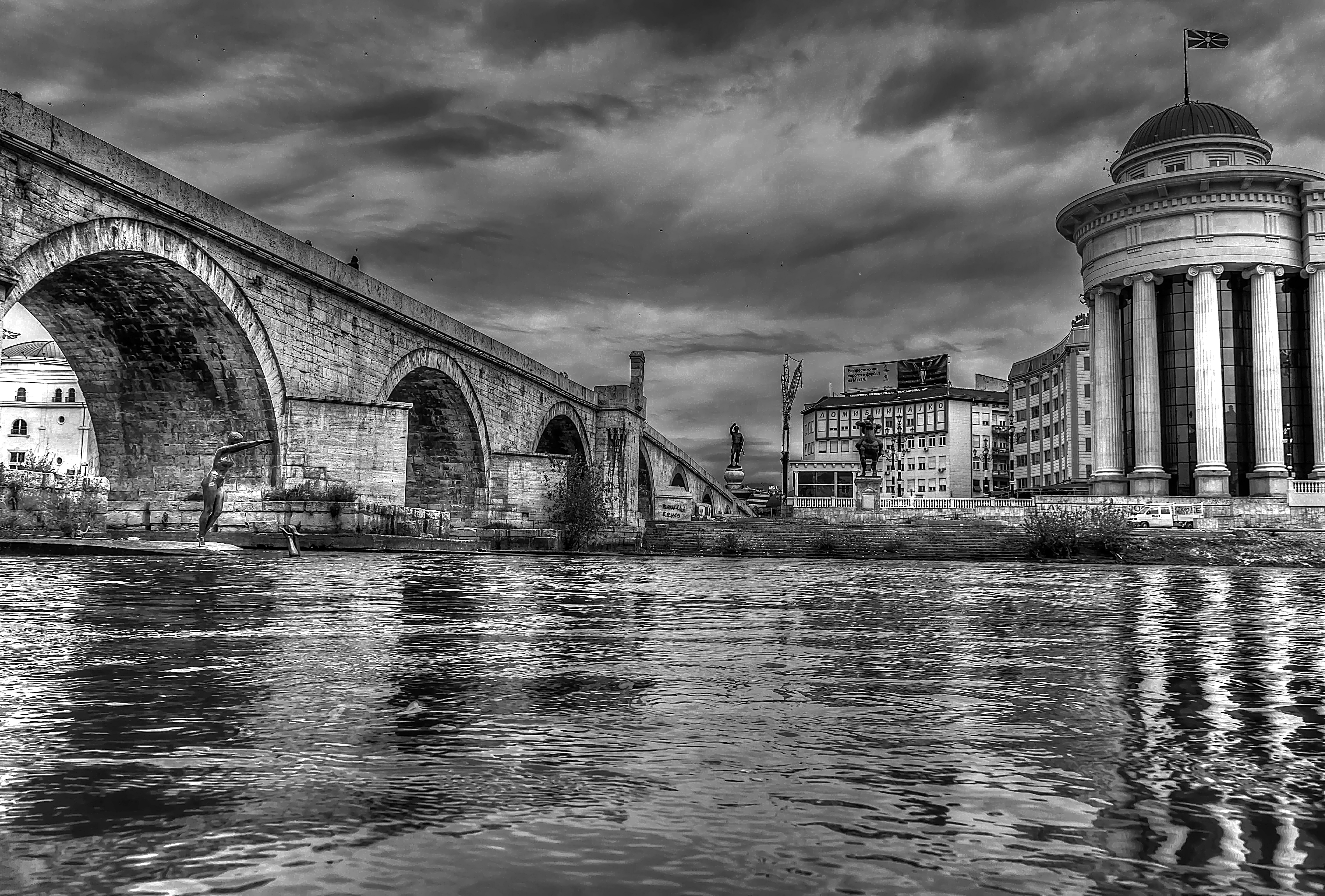
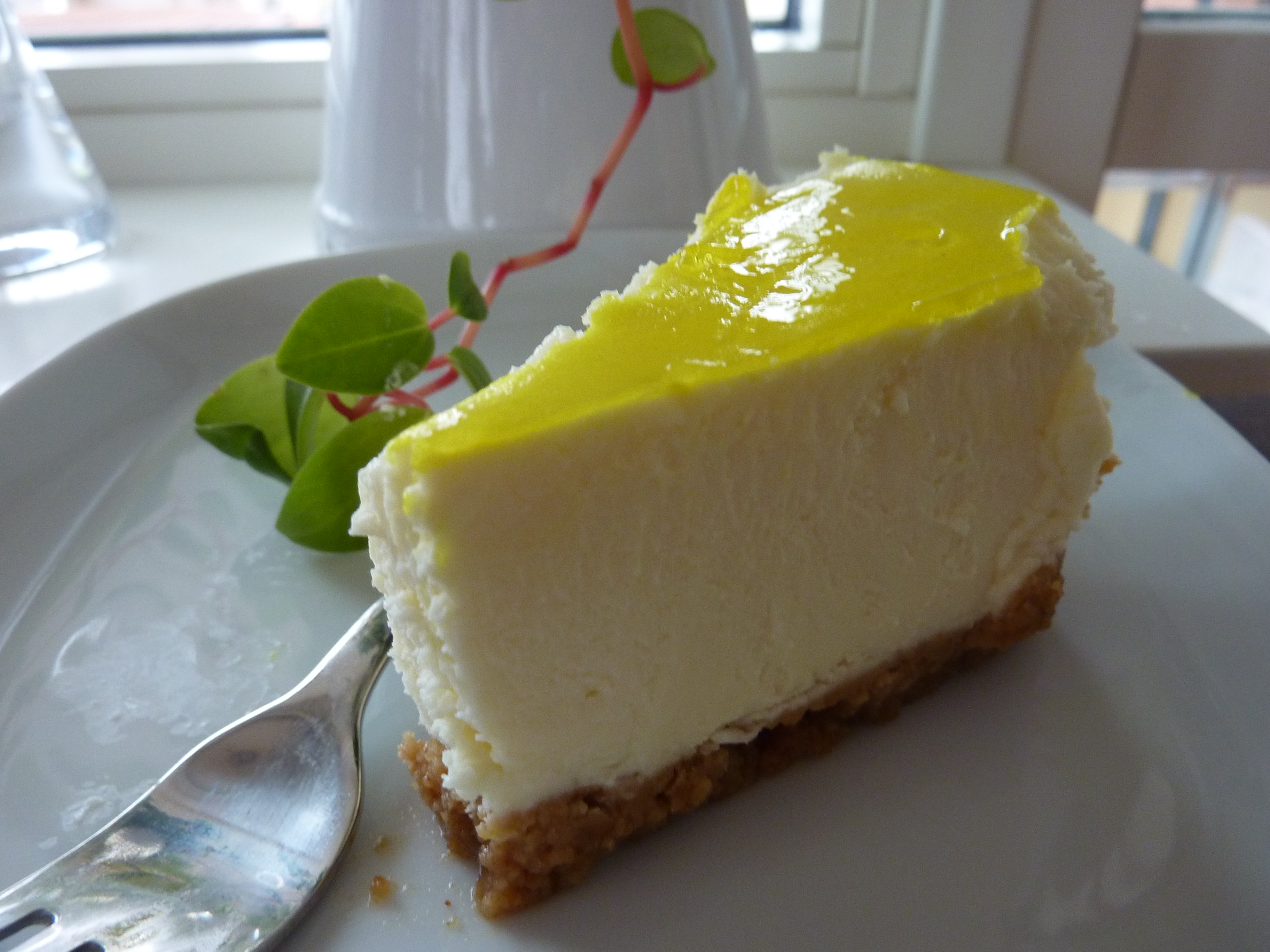
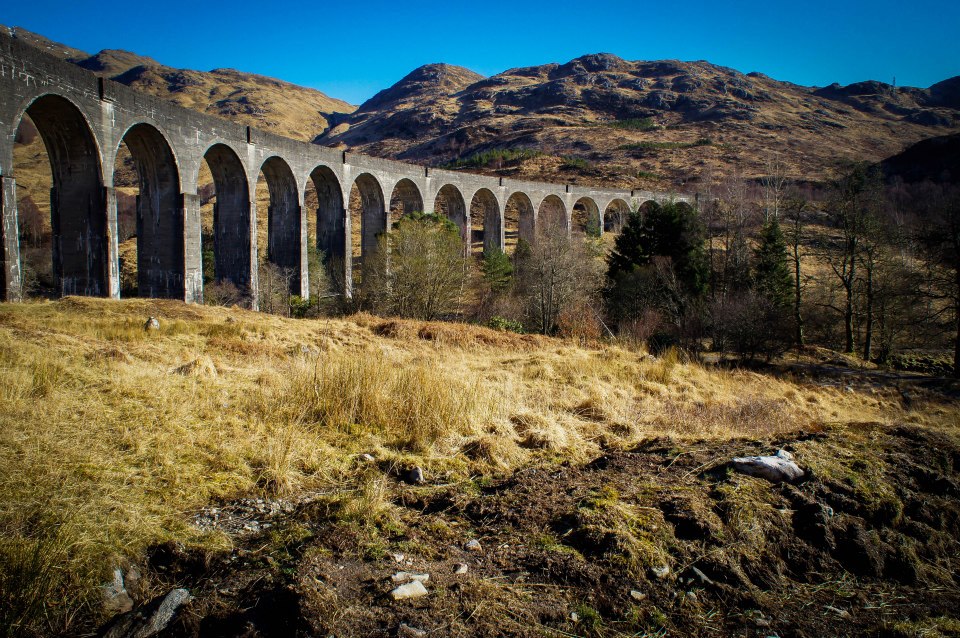

I had a similar experience my first time to Budapest. Since I was visiting in May, I left my heavy coat behind, only to be greeted by freezing rain. Most of that trip was spent in museums and the spas 🙂 I haven’t been to any of the Balkan countries yet, but can’t wait to explore this fascinating part of the world!
A spa is a great place to spend a rainy day. The Balkans are great to explore, and easily becoming my favourite region in Europe!
I have a friend from Skopje and have always wanted to see the city for myself. I find the Balkans area to be unbelievably attractive. Your post is lovely, I know when travelling it’s not always sunshine and butterflies, you’ll often be stuck in rainy, gloomy weather – and it’s always nice to see travellers who make the most out of that weather and show that it can also be lovely!
I really liked Skopje, despite the rain – maybe I had a lot of preparation being from Britain?! You have to take the good with the bad when you travel, don’t you?
I hope you get to visit one day soon!
I would definitely find a nice coffee shop and eat a lot of French truffles. I actually did it once in Brussels when it was raining. Not a good thing for my waistline though :). Great tips!
It rained the whole time I was in Brussels too! I am usually pretty lucky with the weather, but Brussels and Skopje are the wettest cities I’ve ever visited.
My waistline is still suffering 🙁